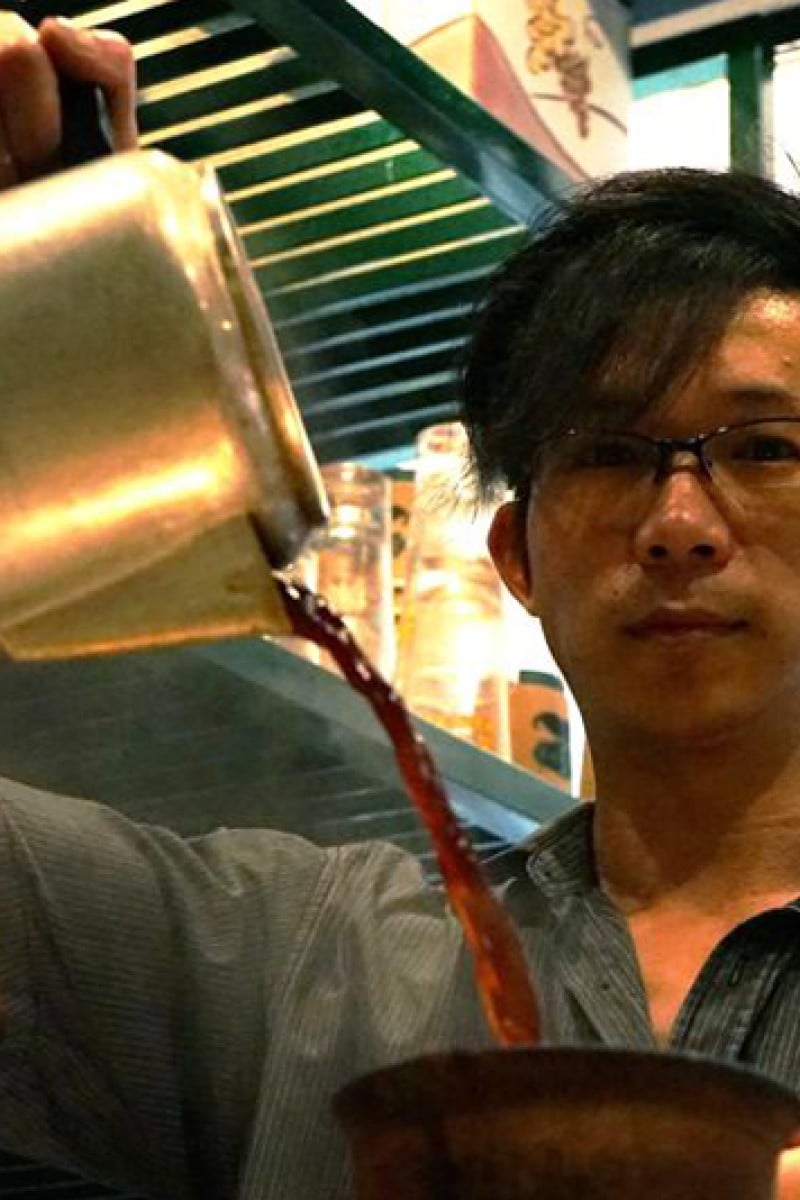
Making HK-style milk tea, which represents two cultures fusing into one, takes skill
 Milk tea master, Joe Yeung Kam-yiu, pulling the tea mix to make Hong Kong-style milk tea.
Milk tea master, Joe Yeung Kam-yiu, pulling the tea mix to make Hong Kong-style milk tea.Milk tea is part of Hong Kong’s food culture and colonial past. A mixture of tea leaves are brewed with hot water, and pulled (a pouring process used to enhance flavour and colour) four times, then finally mixed with evaporated milk and sugar to taste. Officially included in Hong Kong’s list of cultural elements (List of First Intangible Cultural Heritage Inventory of Hong Kong), milk tea uniquely represents how East meets West in our city.
Milk teas in Hong Kong tea shops
Young Post spoke to Chau Hing-wah, curator at the Intangible Cultural Heritage Office, to understand why milk tea is so significant to Hong Kong’s culture and history.
“The habit of drinking milk tea has spread from the grassroots to every social class,” Chau explains.
“Today, Hong Kong-style milk tea can be regarded as the fruit of creativity of several generations. Also, Hong Kong-style milk tea reflected the East-West fusion trends of Hong Kong as well as the lifestyle and food culture of the local people.”
During the British colonial period, the milk tea beverage adapted to local tastes in cha chaan teng and Hong Kong tea restaurants. “The local Chinese who worked in Western-style restaurants learned to create a ‘localised’ version of tea with milk and brought it to tea stalls in the streets for the common folk. This Hong Kong-style milk tea became popular in the post-war period,” Chau says.
What makes a good milk tea?
Young Post spoke to Lo Ye Dim Sum Restaurant’s Director, Michael Loh, to find out more about the secrets behind a good milk tea. “Our restaurant, like all restaurants nowadays, does not use the silk stocking method.” Traditionally in Hong Kong, brewed tea mixture is poured through a sack cloth, more commonly known as the ‘silk stocking’ method due to its resemblance. Loh says: “We use a cotton cloth over a filter to help sieve and pull the tea. Our milk tea blend has two Sri Lankan teas and three mixed herbal teas in one. A good milk tea should be served hot. We normally need 15 to 20 minutes to serve a milk tea – so a lot of customers book in advance to pick up milk tea. We like to serve our milk tea in a thick tea cup to retain maximum flavour, smoothness and colour.”
Recommended daily consumption
According to a test of different caffeine-containing beverages by Hong Kong’s Centre for Food Safety (CFS) in 2013, the average caffeine content of the 30 tested Hong Kong-style milk tea is 170 milligrams per cup. This is almost as much as a regular coffee [also recorded from the test], containing 200 milligrams of caffeine. Louisa Chung Ming-yan, a HKU food and nutrition professor, recommends drinking one milk tea per day due to its strong caffeine content.
Beware of caffeine
Young individuals who are new to caffeine should be mindful of their caffeine intake. Chung explains: “Excessive intake of caffeine can cause anxiety and stomach discomfort, stimulate the central nervous system, increase heart rate and affect sleep. Moreover, caffeine also causes the body to increase the buildup of urine.”
She adds: “People have differing levels of tolerance to caffeine, even those who are in the same age group. For example, some people drink a small cup of coffee or milk tea in the afternoon, and they find it difficult to fall asleep that night; while others drink a regular cup of coffee or milk tea and can still sleep well. On the other hand, those who have been using caffeine for a long time, they may have some problems such as headaches and fatigue, once they quit caffeine.”
Edited by Andrew McNicol